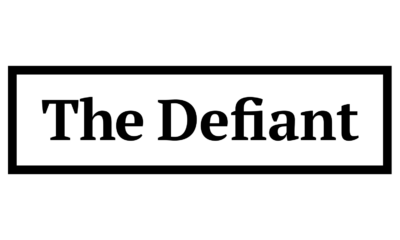DeFi
New EU regulations pose risk to future of decentralization

New European Union regulations could soon force decentralized finance (DeFi) protocols to face important decisions. At the center of this problem is the tendency of many DeFi protocols to use centralized front-ends and intermediaries, raising questions about their compliance with upcoming laws.
The impact of MiCA on DeFi protocols
The European Markets in Crypto Assets (MiCA) Regulation, which is expected to come into full force by the end of 2024, requires DeFi protocols to adhere to the same licensing and know-your-customer (KYC) requirements as traditional financial services. This could present a significant challenge for many DeFi protocols, potentially making compliance difficult or undesirable. Rune Christensen, co-founder of MakerDAO, highlighted the implications of MiCA, noting that DeFi protocols would be left with two main options: fully decentralized, local, uploaded frontends or fully KYC-compliant online frontends.
This regulatory change forces DeFi protocols to choose between a somewhat centralized “hybrid finance” (HyFi) model to comply with EU regulations or complete decentralization. The EU regulation states that fully decentralized protocols are exempt from MiCA requirements, as stated in recital 22: “Where crypto-asset services are provided in a fully decentralized manner without any intermediaries, they should not enter into the scope of this regulation. »
Defining decentralization
Oliver Völkel, lawyer and partner at Stadler Völkel, has studied European regulation of crypto assets in depth. He points out that the regulation raises immediate questions about the definitions of “without intermediary” and “in a completely decentralized manner”. According to Völkel, smart contracts used to provide services on cryptoassets do not necessarily create the appearance of exclusive decentralization, as companies can use these contracts to provide services on their behalf.
Only natural and legal persons can have rights and obligations, make and receive legal representations and be subject to laws such as MiCA. However, Völkel believes that European lawmakers rightly recognize that none of these conditions apply if a crypto-asset service is accessible without an intermediary and in a fully decentralized manner. With MiCA coming into force by the end of 2024, DeFi protocols in Europe must decide whether to be completely decentralized, thereby avoiding regulations, or implement KYC measures like any other centralized financial service provider.
Nathan Catania, partner at XReg Consulting, a firm specializing in the regulation of crypto-assets, suggests that this regulatory wave could divide the DeFi sector. He believes that regulation represents a crucial moment for many DeFi projects, pushing them to either embrace complete decentralization and operate outside of regulatory boundaries, or accept some level of regulation and transition to a hybrid financial model.
Practical steps for decentralization
For those choosing decentralization, MiCA will provide clearer guidance on building truly decentralized applications that comply with regulatory requirements. Many DeFi protocols will need to reevaluate their business models to ensure they remain compliant. Catania advises DeFi projects to fully understand the regulations and engage with national regulatory authorities to protect their interests. A workaround to ensure decentralization is to decentralize website front-ends through peer-to-peer (P2P) web hosting, which uses advanced cryptography to deploy websites on P2P servers.
Whatever path a protocol chooses, regulation becomes an unavoidable reality. Proponents of decentralization could see DeFi evolving into something closer to traditional finance, the very industry they originally aimed to disrupt. The question remains whether the industry will thrive in a decentralized digital universe or whether the influx of capital from traditional market players will transform the sector.
Growing Regulatory Attention on DeFi
As the DeFi sector matures and gains popularity, regulators are paying increased attention to it, as evidenced by the actions of the EU’s MiCA and the US Securities and Exchange Commission against major DeFi protocols. On April 10, 2024, Uniswap became the first decentralized protocol to receive a Wells Notice, indicating regulatory violations.
Hayden Adams, CEO of Uniswap, expressed his frustration, feeling “annoyed, disappointed and ready for a fight.” Adam Simmons, chief strategy officer of DeFi platform Radix, believes some safeguards are necessary, predicting that regulatory requirements for DeFi are inevitable, especially if the sector aims for global adoption.
Today @Uniswap The labs received a Wells Notice from the SEC.
I’m not surprised. Just annoyed, disappointed and ready to fight.
I am confident that the products we offer are legal and that our work is on the right side of history. But it has been clear for a while that rather than…
– hayden.eth 🦄 (@haydenzadams) April 10, 2024
Edward Adlard, CEO of Instalabs, sees the next stage of DeFi evolution as attract money from institutional and traditional finance. However, he identifies two main obstacles: traditional financial companies are not operationally equipped to use crypto tools, and they must figure out how to legally access and offer these products to their customers. Adlard suggests that DeFi DApps must balance implementing anti-money laundering (AML) procedures to attract traditional financial liquidity without becoming targets for regulatory action.
Compliance and future adaptation tools
Compliance tools are already available. Simmons mentions that the DeFi sector in Europe could use a system of trusted issuers to handle identity verification independently. Adlard notes that the DeFi KYC service Instapass could create personalized credentials that comply with EU regulations, allowing DeFi DApps to restrict access to specific parts of their products based on user credentials.
Ultimately, whether a DeFi protocol aims for institutional adoption or full decentralization, it must adapt to the changing legal landscape of the European Union.
DeFi
Haust Network Partners with Gateway to Connect to AggLayer

Dubai, United Arab Emirates, August 1, 2024, Chainwire
Consumer adoption of cryptocurrencies is a snowball that is accelerating by the day. More and more people around the world are clamoring for access to DeFi. However, the user interface and user experience of cryptocurrencies still lag behind their fundamental utility, and users lack the simple and secure access they need to truly on-chain products.
Haust Network is a network and suite of products focused on changing this paradigm and bringing DeFi to the masses. To achieve this goal, Haust Network has announced its far-reaching partnership with bridgeseasoned veterans in rapidly delivering revolutionary blockchain utilities for projects. The Gateway team empowers blockchain developers to build DAOs, NFT platforms, payment services, and more. They drive adoption of crypto primitives for individuals and institutions around the world by helping everyone build their on-chain presence.
Gateway specializes in connecting sovereign blockchains to the Aggregation Layer (AggLayer). The AggLayer is a single unified contract that powers the Ethereum bridge of many disparate blockchains, allowing them all to connect to a single unified liquidity pool. The AggLayer abstracts away the complexities of cross-chain DeFi, making tedious multi-chain transactions as easy for the end user as a single click. It’s all about creating access to DeFi, and with Polygon’s technology and the help of Gateways, Haust is doing just that.
As part of their partnership, Gateway will build an advanced zkEVM blockchain for Haust Network, leveraging its extensive experience to deploy ultra-fast sovereign applications with unmatched security, and enabling Haust Network to deliver its products to its audience.
The recently announced launch of the Haust Wallet is a Telegram mini-app that provides users with access to DeFi directly through the Telegram interface. Users who deposit funds into the wallet will have access to all standard send/receive services and generate an automatic yield on their funds. The yield is generated by Haust Network’s interconnected network of smart contracts, Haustoria, which provides automated and passive DeFi yielding.
As part of this partnership, the Haust Network development team will work closely with Gateway developers to launch Haust Network. Gateway is an implementation provider for Polygon CDK and zkEVM technology, which the Haust wallet will leverage to deliver advanced DeFi tools directly to the wallet users’ fingertips. Haust’s partnership with Gateway comes shortly after the announcement of a high-profile alliance with the Polygon community. Together, the three will work to build Haust Network and connect its products to the AggLayer.
About Haust Network
Haust Network is an application-based absolute liquidity network and will be built to be compatible with the Ethereum Virtual Machine (EVM). Haust aims to provide native yield to all users’ assets. In Telegram’s Haust Wallet, users can spend and collect their cryptocurrencies in one easy place, at the same time. Haust operates its network of self-balancing smart contracts that interact across multiple blockchains and then efficiently funnel what has been generated to Haust users.
About Gateway
bridge is a leading white-label blockchain provider that offers no-code protocol deployment. Users can launch custom blockchains in just ten minutes. They are an implementation provider for Polygon CDK and have already helped projects like Wirex, Gnosis Pay, and PalmNFT bring new utility to the crypto landscape.
About Polygon Labs
Polygon Laboratories Polygon Labs is a software development company building and developing a network of aggregated blockchains via the AggLayer, secured by Ethereum. As a public infrastructure, the AggLayer will aggregate the user bases and liquidity of any connected chain, and leverage Ethereum as the settlement layer. Polygon Labs has also contributed to the core development of several widely adopted scaling protocols and tools for launching blockchains, including Polygon PoS, Polygon zkEVM, and Polygon Miden, which is currently under development, as well as the Polygon CDK.
Contact
Lana Kovalski
haustnetwork@gmail.com
DeFi
Ethena downplays danger of letting traders use USDe to back risky bets – DL News

- Ethena and ByBit will allow derivatives traders to use USDe as collateral.
- There is a risk in letting traders use an asset partially backed by derivatives to place more bets.
Ethena has downplayed the dangers of a new feature, which will allow traders to put up its synthetic dollar USDe as collateral when trading derivatives, which are risky bets on the prices of crypto assets.
While allowing users to underwrite their trades with yield-bearing USDe is an attractive prospect, Ethena said there is potential risk in letting traders use an asset partially backed by derivatives to place even more derivatives bets.
“We have taken this risk into account and that is why Ethena operates across more than five different sites,” said Conor Ryder, head of research at Ethena Labs. DL News.
The move comes as competition in the stablecoin sector intensifies.
In recent weeks, PayPal grown up the amount of its stablecoin PYUSD in circulation 96%, while the MakerDAO cooperative plans a rebrandingaiming to increase the supply of its DAI stablecoin to 100 billion.
US dollar growth stagnates
It comes as Ethena has lost momentum after its blockbuster launch in December.
In early July, USDe reached a record level of 3.6 billion in circulation.
That figure has now fallen by 11% to around 3.2 billion.
Join the community to receive our latest stories and updates
New uses for USDe could boost demand for Ethena’s products.
This is where the new plan, announcement Tuesday with ByBit, one of its partner exchanges, is coming.
Ethena users create USDe by depositing Bitcoin or Ether into the protocol.
Ethena then covers these deposits with short positions – bearish bets – on the corresponding asset.
This creates a stable support for USDe, unaffected by price fluctuations in Bitcoin or Ether.
Mitigate risks
While using USDe as collateral for derivatives trading is proving popular, it is unclear what the effects will be if the cryptocurrency market experiences major fluctuations.
Using derivatives as collateral to place more bets has already had disastrous effects.
In June 2022, Lido’s liquid staking token stETH broke its peg to Ether following the fallout from the Terra collapse.
Many traders who used looping leverage to increase their stETH staking yields were liquidated, creating a cascade that caused the price of Ether to drop by more than 43%.
Ethena Labs founder Guy Young said: DL News His office and his partners have taken many precautions.
Ethena spreads bearish bets supporting the USDe across the five exchanges it partners with.
According to Ethena, 48% of short positions supporting USDe are on Binance, 23% on ByBit, 20% on OKX, 5% on Deribit, and 1% on Bitget. website.
In doing so, Ethena aims to minimize the impact of an unforeseen event on a stock market.
The same theory applies to the distribution of risks across different supporting assets.
Fifty percent of USDe is backed by Bitcoin, 30% by Ether, 11% by Ether liquid staking tokens, and 8% by Tether’s USDT stablecoin.
Previous reviews
Ethena has already been criticised regarding the risks associated with USDe.
Some have compared USDe to TerraUSD, an undercollateralized stablecoin that collapsed in 2022.
“It’s not a good design for long-term stability,” said Austin Campbell, an assistant professor at Columbia Business School. said as the USDe launch approaches.
Young replied to critics, saying the industry needs to be more diligent and careful when “marketing products to users who might not understand them as well as we do.”
Ethena has since added a disclaimer on its website stating that USDe is not the same as a fiat stablecoin like USDC or USDT.
“This means that the risks involved are inherently different,” the project says on its website.
Tim Craig is DL News DeFi correspondent based in Edinburgh. Feel free to share your tips with us at tim@dlnews.com.
DeFi
Cryptocurrency and defi firms lost $266 million to hackers in July

In July 2024, the cryptocurrency industry suffered a series of devastating attacks, resulting in losses amounting to approximately $266 million.
Blockchain Research Firm Peck Shield revealed in an X post On August 1, attacks on decentralized protocols in July reached $266 million, a 51% increase from $176 million reported in June.
The most significant breach last month involved WazirX, one of India’s largest cryptocurrency exchanges, which lost $230 million in what appears to be a highly sophisticated attack by North Korean hackers. The attack was a major blow to the stock market, leading to a break in withdrawals. Subsequently, WazirX launched a program in order to recover the funds.
Another notable incident involved Compound Finance, a decentralized lending protocol, which suffered a governance attack by a group known as the “Golden Boys,” who passed a proposal who allocated 499,000 COMP tokens – valued at $24 million – to a vault under their control.
The cross-chain liquidity aggregation protocol LI.FI also fell victim On July 16, a hack resulted in losses of $9.73 million. Additionally, Bittensor, a decentralized machine learning network, was one of the first protocols to suffer an exploit last month, loming $8 million on July 3 due to an attack targeting its staking mechanism.
Meanwhile, Rho Markets, a lending protocol, suffered a $7.6 million breach. However, in an interesting twist, the exploiters research to return the stolen funds, claiming the incident was not a hack.
July 31, reports The Terra blockchain protocol was also hacked, resulting in a loss of $6.8 million across multiple cryptocurrencies. As crypto.news reported, the attack exploited a reentrancy vulnerability that had been identified a few months ago.
Dough Finance, a liquidity protocol, lost $1.8 million in Ethereum (ETH) and USD Coin (USDC) to a flash loan attack on July 12. Similarly, Minterest, a lending and borrowing protocol, saw a loss of $1.4 million due to exchange rate manipulation in one of its markets.
Decentralized staking platform MonoSwap also reported a loss of $1.3 million following an attack that allowed the perpetrators to withdraw the liquidity staked on the protocol. Finally, Delta Prime, another decentralized finance platform, suffered a $1 million breach, although $900,000 of the stolen funds was later recovered.
DeFi
The Rise of Bitcoin DeFi: Then and Now

The convergence of Bitcoin’s robust security and Layer 2 scaling solutions has catalyzed the emergence of a vibrant DeFi ecosystem.
By expanding Bitcoin’s utility beyond simple peer-to-peer payments, these advancements have opened up a new frontier of financial possibilities, allowing users to participate in decentralized lending, trading, and other complex smart contract operations on Bitcoin.
Read on to learn about the rise of Bitcoin-based decentralized finance and how the space has expanded to accommodate a new generation of native assets and features.
Note: If you want to learn candlesticks and chart trading from scratch, this is the best book available on Amazon! Get the book now!
What is DeFi?
Decentralized finance (DeFi) represents a paradigm shift in financial services, offering internet-based financial products such as trading, lending, and borrowing through the use of decentralized public blockchains.
By implementing blockchains, smart contracts, and digital assets, DeFi protocols provide financial services through a decentralized ecosystem, where participants do not have to deal with intermediaries when transacting.
What is Bitcoin DeFi?
The inherent limitations of the Bitcoin mainchain in supporting the intricacies of decentralized finance have created the need to develop smart contract-based Layer 2 solutions.
Additionally, the advent of the Ordinals protocol in 2023, which facilitated the emergence of fungible token standards such as BRC-20 and Runes, catalyzed the growth of DeFi on the Bitcoin blockchain.
This expansion in protocol diversity has broadened the applications of the world’s leading cryptocurrency network beyond the core base-layer use cases around value preservation and transactional capabilities.
Therefore, Bitcoin DeFi has become a nascent sector within the digital asset market, after previously being a missing essential part of the Bitcoin ecosystem.
Bitcoin DeFi in its early days
Integrating decentralized finance (DeFi) concepts into the Bitcoin ecosystem has been a journey of innovation and perseverance. Early attempts to bridge the gap between Bitcoin’s fundamental simplicity and DeFi’s complexities have spawned pioneering projects that, while laying essential foundations, have also encountered significant obstacles.
Colored coins
Colored coins represented an early foray into tokenizing real-world assets on the Bitcoin blockchain. By leveraging the existing network to track ownership of assets ranging from stocks to real estate, this approach highlighted Bitcoin’s potential as a platform beyond digital currency. However, scalability and practical implementation challenges have limited its widespread adoption.
Counterpart
Building on the colored coins, Counterparty has become a platform for creating and trading digital assets, including non-fungible tokens (NFTs), on Bitcoin.
The introduction of popular projects like Rare Pepe NFTs has demonstrated the growing appeal of digital collectibles. However, constraints around user experience and network efficiency have hampered its full potential.
These early experiments, while not fully realizing their ambitions, served as valuable stepping stones, informing Bitcoin DeFi’s subsequent developments. Their challenges highlighted the need for more sophisticated infrastructure and protocols to harness the full potential of decentralized finance on the Bitcoin network.
Bitcoin DeFi Today
Today, building DeFi applications on Bitcoin is primarily done in the realm of Layer 2 (L2) networks. This architectural choice is motivated by the limitations of Bitcoin’s base layer in supporting complex programmable smart contracts.
Bitcoin’s original design prioritized security and decentralization over programmability, making it difficult to develop sophisticated DeFi protocols directly on its blockchain. However, the recent emergence of protocols like Ordinals, BRC-20, and Runes, while not DeFi in their own right, has sparked possibilities for future DeFi-like applications on the main chain.
In contrast, L2 solutions offer a scalable and programmable environment built on Bitcoin, enabling the creation of various DeFi products.
By expanding Bitcoin’s capabilities without compromising its core principles, L2s have become the preferred platform for developers looking to build DeFi applications that encompass trading, lending, staking, and more.
Leading L2 networks such as Lightning Network, Rootstock, Stacks, and Build on Bitcoin provide the infrastructure for these efforts. Some of these L2s have even introduced their own native tokens to the network, further expanding Bitcoin’s DeFi ecosystem.
Essentially, while Bitcoin’s core layer presents challenges for DeFi development, its security and decentralization have provided a foundational layer for the innovative L2 landscape to thrive.
Bitcoin Layer 2 offers a promising path to building a robust and thriving Bitcoin-based DeFi ecosystem that offers trading, staking, lending, and borrowing. All you need is a DeFi Wallet like Xverse to access the new world of decentralized financial services secured by Bitcoin.
Conclusion
The integration of DeFi principles into the Bitcoin ecosystem, primarily facilitated by Layer 2 solutions, marks a significant evolution in the digital asset landscape.
Building on the foundational work of pioneers like Colored Coins and Counterparty, the industry has evolved into more sophisticated platforms like Rootstock, Stacks, and Build on Bitcoin to create a thriving Bitcoin-powered DeFi ecosystem.
Advertisement
-

 News8 months ago
News8 months agoBitcoin soars above $63,000 as money flows into new US investment products
-

 DeFi8 months ago
DeFi8 months agoEthena downplays danger of letting traders use USDe to back risky bets – DL News
-

 DeFi8 months ago
DeFi8 months agoZodialtd.com to revolutionize derivatives trading with WEB3 technology
-

 News8 months ago
News8 months agoFRA Strengthens Cryptocurrency Practice with New Director Thomas Hyun
-

 Markets8 months ago
Markets8 months agoBitcoin Fails to Recover from Dovish FOMC Meeting: Why?
-

 DeFi11 months ago
DeFi11 months ago👀 Lido prepares its response to the recovery boom
-

 DeFi10 months ago
DeFi10 months agoPancakeSwap integrates Zyfi for transparent, gas-free DeFi
-

 DeFi11 months ago
DeFi11 months ago🏴☠️ Pump.Fun operated by Insider Exploit
-

 DeFi11 months ago
DeFi11 months ago🚀 S&P says tokenization is the future
-

 DeFi11 months ago
DeFi11 months ago👀SEC Receives Updated Spot Ether ETF Filings
-

 Videos10 months ago
Videos10 months agoBlackRock and Wall Street ready to take Bitcoin directly to $200,000 – Anthony Scaramucci
-

 DeFi10 months ago
DeFi10 months ago⏱️ The SEC is not rushing the commercialization of Spot Ether ETFs







